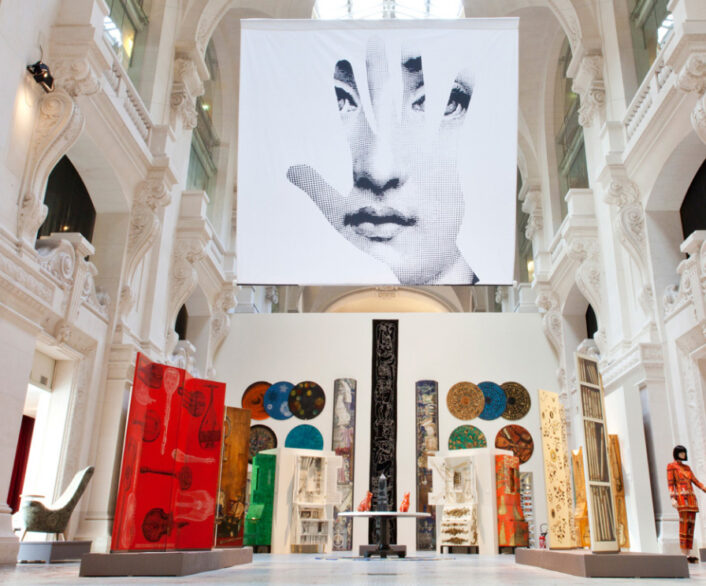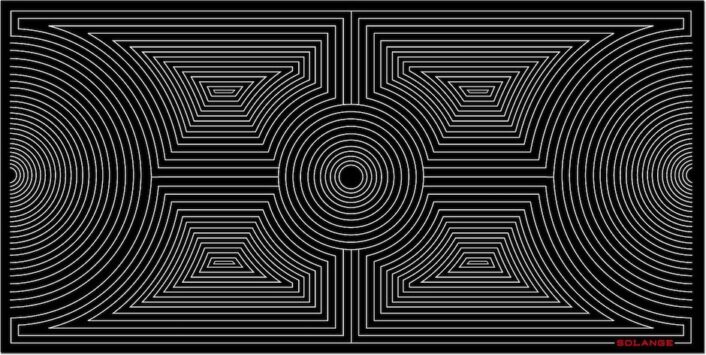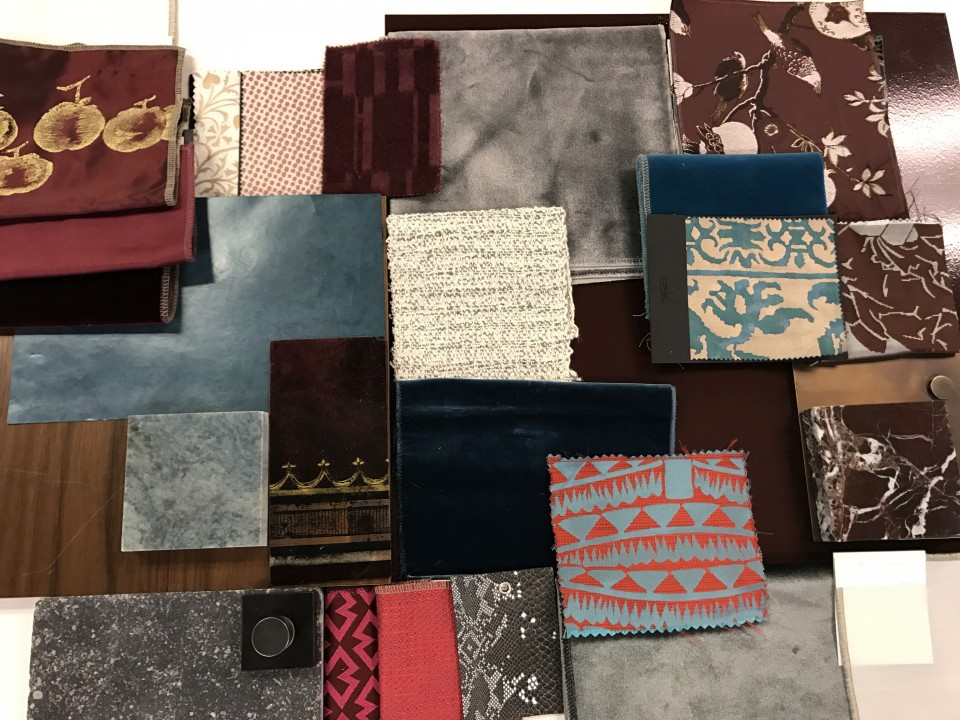
A Ballets Russes inspired palette.
Image courtesy of Suzanne Lovell Inc.
We were thrilled as our client recently brought in her very special program of Ballets Russes, Théâtre du Châtelet, May-June 1912. The decorative plates enclosed inspired the palette for her space, and we selected favorites together to frame and feature as a collection. Enjoy a brief history of Ballets Russes, some of these favorite sketches and the palette that was the result of a very fruitful client collaboration!
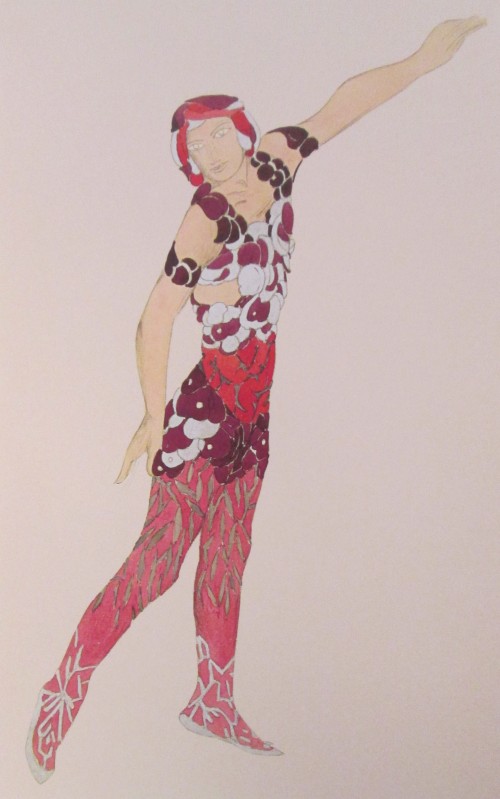
La Spectre de la rose, Leon Bakst’s costume sketch for Vaslav Nijinsky, 1914.
Images courtesy of The Official Program of Ballets Russes, Théâtre du Châtelet, May-June 1912, by Vaslav Nijinsky (b. 1889, Kiev, Ukraine, – 1950, London)
The 1912 season of the Ballets Russes included Le Dieu Bleu, Thamar, Daphnis et Chloë, and L’Après-Midi d’un Faune.
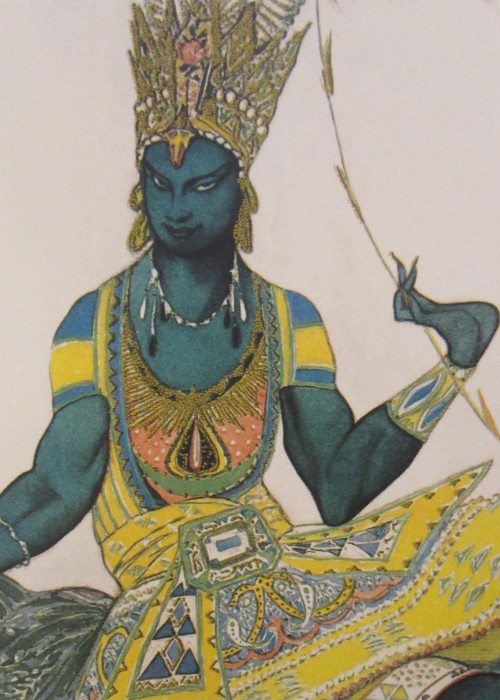
La Dieu bleu, Leon Bakst’s costume sketch for Vaslav Nijinsky as the Blue God, 1912.
The Ballets Russes was a ballet company established in 1909 by the Russian impresario Serge Diaghilev in Paris, and was resident at the Théâtre Mogador and Théâtre du Châtelet, in Paris and in Monte Carlo, and in 1911 made its debut in London. The original thirteen members were from the Tsar’s Imperial Ballet of St. Petersburg, Russia, and the company featured and premiered now-famous works by the great choreographers Marius Petipa, Michel Fokine, Bronislava Nijinska, Leonide Massine, Vaslav Nijinsky, and a young George Balanchine at the start of his career.
Ballets Russes created a sensation in Western Europe as a part of the avant-garde due to ground-breaking artistic collaboration among contemporary choreographers, composers, artists, and dancers.
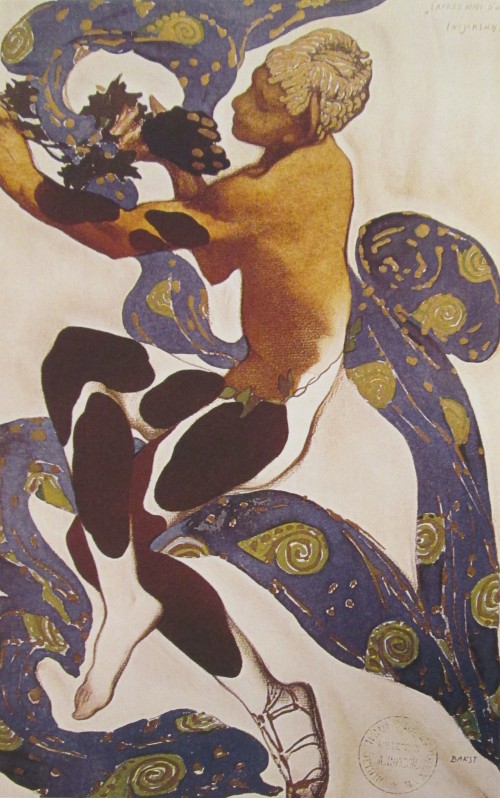
L’Apres-midi d’un faune, Leon Bakst’s costume sketch, 1912.
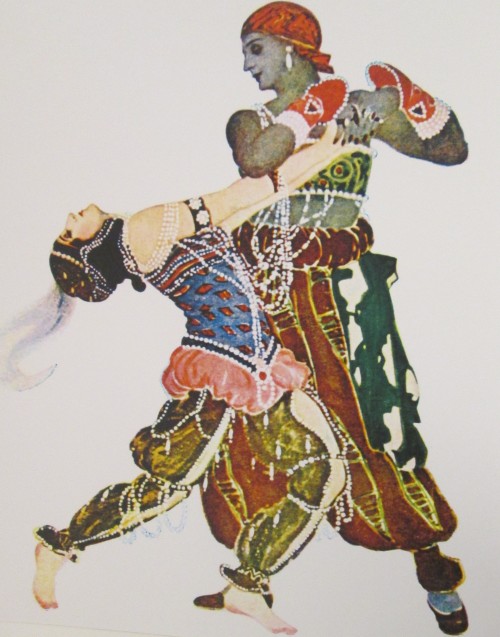
Scheherazade, a sketch by Leon Bakst of Vera Fokina and Michel Fokine in Nikolai Rimsky-Korsakov’s ballet; Fokine was also the choreographer.
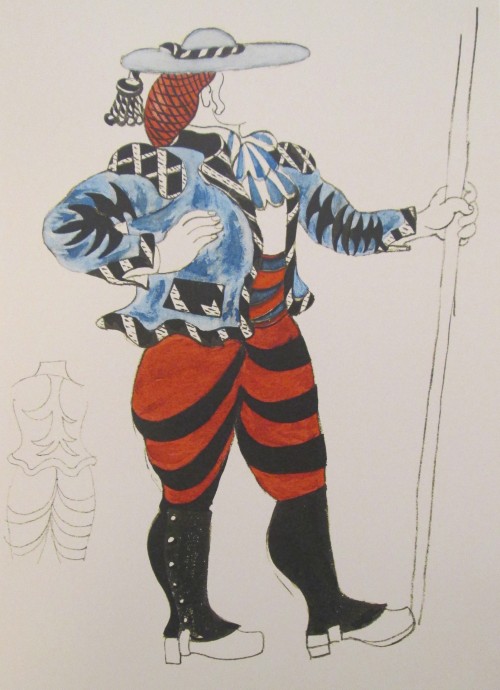
Image courtesy of The Official Program of Ballets Russes, Théâtre du Châtelet, May-June 1912, by Vaslav Nijinsky (b. 1889, Kiev, Ukraine, – 1950, London)
